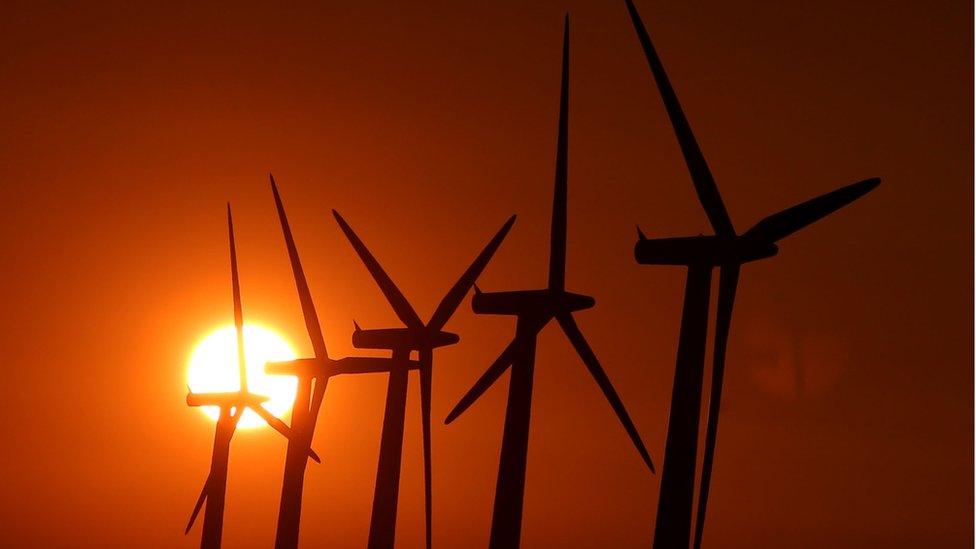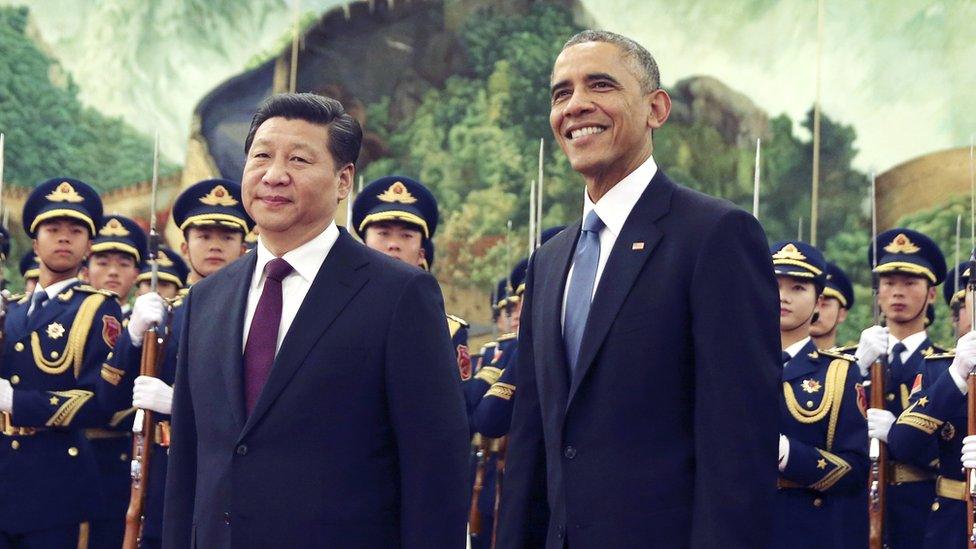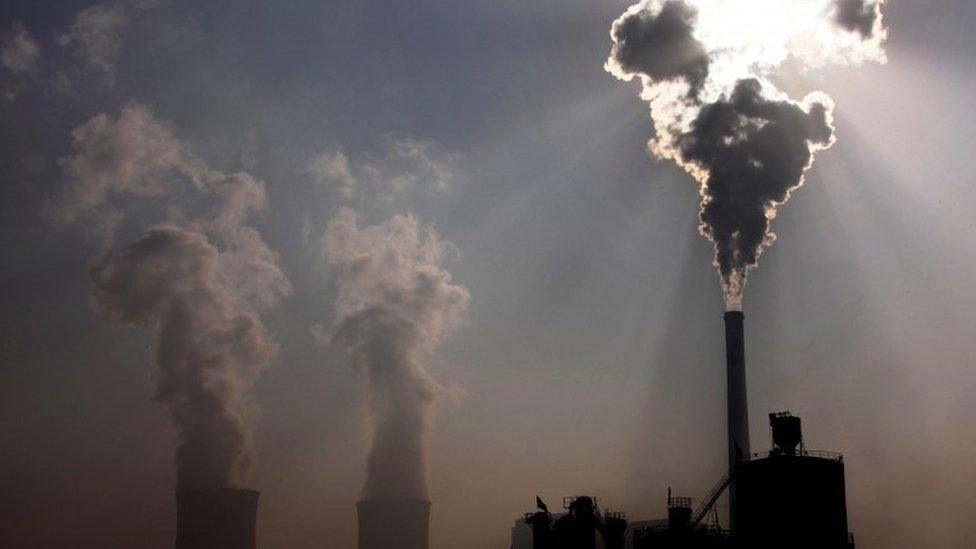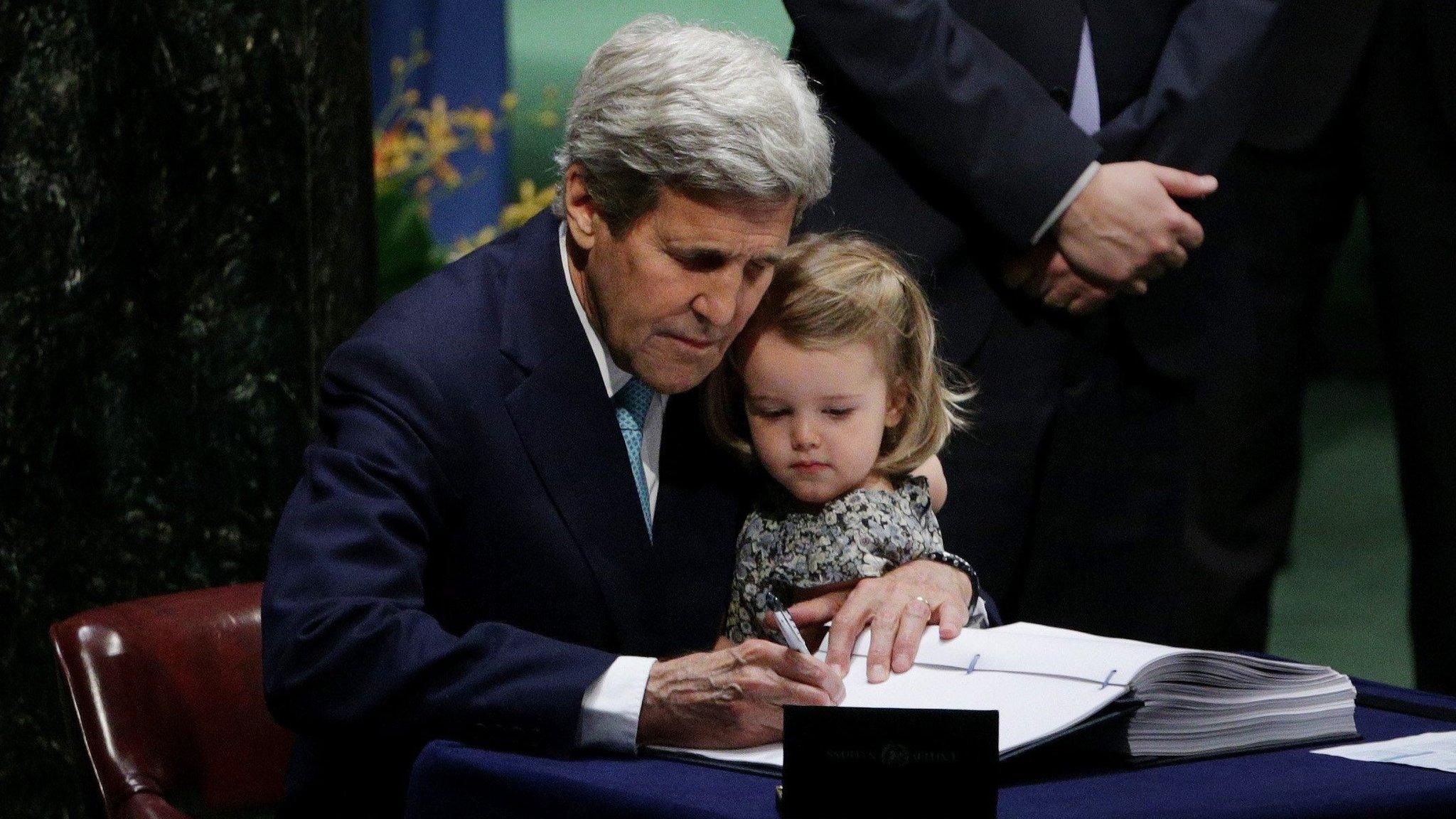China and US climate pledge sets course for future of Paris deal
- Published

Switching from fossil fuels like coal to renewable energy has got easier for countries like China, as the cost of wind and solar power has dropped
The joint commitment from the world’s super-polluters, announced on Saturday, is a big step towards turning the Paris climate agreement into reality.
The deal will take legal force when it is ratified by 55 signatories producing 55% of global emissions.
Ratification by China and the US bumps the total to 40% of emissions. It will just need the EU and a couple of other major polluters to cross the threshold.
Other nations will still tussle over their own ratification, but this sets clear ambition, and the US-China deal will put pressure on G20 nations over the weekend to move faster with their pledge to phase out subsidies to fossil fuels.

Paris agreement: Key points
To keep global temperature increase "well below" 2C and to pursue efforts to limit it to 1.5C
To peak greenhouse gas emissions as soon as possible and achieve a balance between sources and sinks of greenhouse gases in the second half of this century
To review progress every five years
$100bn a year in climate finance for developing countries by 2020, with a commitment to further finance in the future
Once the deal comes into force, countries that have ratified it have to wait for a minimum of three years before they exit

President Obama is in China at the end of a legacy tour, in which he has visited Nevada and Hawaii to warn of climate disruption.
Over recent years he has persuaded the reluctant Chinese that they need to accept their own climate commitments in order to buy him political space for America’s pledges.

China's importance on the global stage has grown in recent years - this photograph is from President Obama's visit to Beijing in 2014
Both nations have set widely differing targets reflecting their different stages of economic development.
The USA says it intends to reduce emissions by 26-28% below its 2005 level in 2025, trying hard for the upper limit.
China has promised to stop the upward path of its emissions by 2030, although it will far exceed that goal.
But even if enough other players step forward to make the Paris deal law, huge challenges lie ahead.
The current pledged emissions cuts are still projected to bring 2.7C or more of warming – well above the aspirational 1.5C heating that the UN accepts should really be the limit.
And that is supposing that nations keep their promises on emissions cuts.
In the UK the Labour Party has urged Theresa May to ratify the Paris deal immediately.
The US-China deal will also put pressure on G20 nations over the weekend to move faster with their pledge to phase out subsidies to fossil fuels.
Follow Roger on Twitter @rharrabin, external
- Published3 September 2016

- Published22 April 2016
